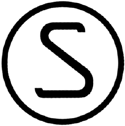| VDE Testing and Certification
Institute |
| Mark |
Description |
 |
VDE Mark for appliances as technical equipment according to
the Appliance Safety Law (GSG), for Medical Device Law (MPG),
components and installation materials.The VDE Mark indicates
conformity with the VDE standards or European or internationally
harmonized standards resp. and confirms compliance with protective
requirements of the applicable EC Directive(s). The VDE Mark is a
symbol for electrical, mechanical, thermal, toxic, radiological and
other hazards. |
 |
For appliances as technical equipment according to the
GSG.For ready-to-use equipment, the licence holder may chose to
affix the VDE Mark or the VDE GS Mark. |
 |
For products certified on the basis of harmonized
certification agreements.Testing is based on harmonized
European standards listed in the ENEC Agreement. Products (at present luminaires
and related components, energy saving lamps, IT equipment,
transformers, switches for appliances, electrical controls, certain
types of capacitors and EMI suppression components) tested to
tested to the listed standards may be marked with the ENEC Mark of
the VDE. The approval of any other body participating in the ENEC
Agreement is not required. |
 |
For appliances in compliance with standards for
electromagnetic compatibility.The VDE EMC Mark expresses the
conformity of a product with applicable standards for
electromagnetic compatibility. The reliable function of the product
in its electromagnetic environment is also included. The
requirements for granting this mark comprise automatically and
without restriction the compliance with applicable standards. |
 |
For cables, insulated cords, installation conduits and
ducts, the VDE Cable Mark is applicable.

For cables and cords, the VDE Identification Thread may be
used. |
 |
VDE-HARmonization Marking

The VDE HARmonization Marking or VDE HARmonization Thread resp.
for cables and insulated cords according to harmonized
certification procedures.Testing is based on the Harmonization
Documents (HD) listed in the HAR Agreement. Products (harmonized
power cables) tested and found in compliance with with the
requirements of the mentioned standards may be marked with the VDE
HARmonization Marking. Further information is available from the
Laboratory for Cables and Cords, Materials and Special Tests. |
 |
The VDE Component Mark may be used for electronic
components. |
 |
The CECC Mark for electronic components according to CECC
Specifications.For electronic components according to CECC
Specifications (CECC: CENELEC Electronic Components Committee) the
CECC Mark may be used. |
 |
VDE-Reg.-Nr. XXXXX
VDE-Reg.-Nr. (VDE Certificate of Conformity in conjunction with
factory surveillance)This mark is used in two cases: firstly,
for products in compliance with applicable clauses of VDE standards
in the absence of a fully applicable VDE standard, and secondly, if
a product, e.g. a sub-assembly, requires the fulfillment of
additional conditions when incorporated into complete equipment.
For cables and insulated cords, the VDE-Reg.-Nr. or the relevant
mark resp. is applicable in absence of special regulations for
products which were tested on the basis other standards. Special
constructions and all variations of non-harmonized cables and
insulated cords belong to this category of products. |
| Underwriters Laboratories
Inc. |
| Mark |
Description |
 |
UL Listing Mark
This is one of the most common UL Marks. If a product carries this
Mark, it means UL found that samples of this product met UL's
safety requirements. These requirements are primarily based on UL's
own published Standards for Safety. This type of Mark is seen
commonly on appliances and computer equipment, furnaces and
heaters, fuses, electrical panelboards, smoke and carbon monoxide
detectors, fire extinguishers and sprinkler systems, personal
flotation devices like life jackets and life preservers, bullet
resistant glass, and thousands of other products. |
 |
C-UL Listing Mark
This mark is applied to products for the Canadian market. The
products with this type of mark have been evaluated to Canadian
safety requirements, which may be somewhat different from U.S.
safety requirements. You will see this type of Mark on appliances
and computer equipment, vending machines, household burglar alarm
systems, lighting fixtures, and many other types of products. |
 |
C-UL US Listing Mark
UL introduced this new Listing Mark in early 1998. It indicates
compliance with both Canadian and U.S. requirements. The
Canada/U.S. UL Mark is optional. UL encourages those manufacturers
with products certified for both countries to use this new,
combined Mark, but they may continue using separate UL Marks for
the United States and Canada. |
 |
Classification Mark
This mark appears on products which UL has also evaluated. Products
carrying this mark have been evaluated for specific properties, a
limited range of hazards, or suitability for use under limited or
special conditions. Typically, products Classified by UL fall into
the general categories of building materials and industrial
equipment. Examples of types of equipment Classified by UL include
immersion suits, fire doors, protective gear for fire fighters and
industrial trucks. |
 |
C-UL Classification Mark
This Classification marking is used for products intended for the
Canadian marketplace. It indicates that UL has used Canadian
standards to evaluate the product for specific hazards or
properties. Examples of C-UL Classified products include air filter
units, firestop devices, certain types of roofing systems, and
others. |
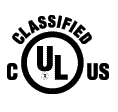 |
C-UL US Classification Mark
UL introduced this new Classification Mark in early 1998. It
indicates compliance with both Canadian and U.S. requirements. The
Canada/U.S. UL Mark is optional. UL encourages those manufacturers
with products certified for both countries to use this new,
combined Mark, but they may continue using separate UL Marks for
the United States and Canada. |
  |
Recognized Component Mark and Canadian Recognized Component
Mark
These are marks consumers rarely see because they are specifically
used on component parts that are part of a larger product or
system. These components may have restrictions on their performance
or may be incomplete in construction. The Component Recognition
marking is found on a wide range of products, including some
switches, power supplies, printed wiring boards, some kinds of
industrial control equipment and thousands of other products.
Products intended for Canada carry the Recognized Component mark
"C." |
 |
Recognized Component Mark for Canada and the United
States
This new UL Recognized Component Mark,which became effective April
1, 1998, may be used on components certified by UL to both Canadian
and U.S. requirements. Although UL had not originally planned to
introduce a combined Recognized Component Mark, the popularity of
the Canada/U.S. Listing and Classification Marks among clients with
UL certifications for both Canada and the United States has led to
the new Mark. |
 |
International "emc-Mark"
The International "emc-Mark" appears on products meeting the
electromagnetic compatibility requirements of Europe, the United
States, Japan, Australia, or any combination of the four. In the
United States, some types of products can't be sold without proof
of compliance to U.S. electromagnetic compatibility requirements.
The types of products that are subject to EMC testing include
medical and dental equipment, computers, microwave ovens,
televisions, radios, transmitters, and radio-controlled
equipment. |
  |
EPH Product Mark
The UL EPH mark appear on products that have been evaluated to
Environmental and Public Health Standards. The "Classified" version
is used for products complying with ANSI/NSF Standards and other
food equipment hygiene codes and requirements. Examples include
Food Service and Meat and Poultry Plant Equipment and Drinking
Water Additives. The "Listed" version is typically used for
products complying with UL's own published EPH Standards for
Safety. |
 |
Food Service Product Certification Mark
The UL Food Service Product Certification Mark is UL's
Classification Mark with specific reference to the appropriate NSF
International standard. In addition, at the manufacturer's option,
a supplemental Mark can be applied as shown. Equipment bearing the
Mark is not limited to electrical products, but also includes gas
appliances and non-powered equipment. These products are commonly
found in commercial food establishments, institutional food
services and other locations. |
 |
Field Evaluated Product Mark
A Field Evaluated Product Mark is applied to a product that is
thoroughly evaluated in the field instead of UL's laboratories or
the manufacturer's facility. If a product has been significantly
modified since its manufacture or the product doesn't bear any
third-party certification mark, a building owner, a regulatory
authority, or anyone else directly involved with the product can
request that UL conduct tests in the field on the specific piece of
equipment. Products that meet appropriate safety requirements are
labeled with a tamper-resistant Field Evaluated Product Mark. |
 |
Facility Registration Mark
The UL Registered Firm Mark is a mark you will never see on a
product. Instead, it indicates that a particular facility has
passed UL's evaluation to quality assurance standards and is used
in promotion and marketing by companies with quality assessment
programs audited by UL. The standards UL uses are the ISO 9000
series of quality assurance standards; QS-9000, the quality
standards developed by the Big Three U.S. automakers for their
suppliers; and ISO 14001, the standard covering environmental
management systems. |
 |
Marine Mark
The UL Marine mark appears on products which have been evaluated
specifically for marine use. Products bearing this Mark have been
evaluated to UL's published Marine Safety Standards and other
applicable standards and codes. These requirements address hazards
that can occur as a result of exposure to harsh marine environments
such as vibration, shock (impact), ignition protection, water
ingress and salt spray corrosion common on pleasure craft and
boats. Examples of the type of equipment suitable for the UL Marine
Mark include alternators, battery chargers/power inverters,
navigation lights, and fuel tanks, filters and pumps. |
 |
AR-UL Mark Used in conjunction with the mandatory "S" Mark of
Argentina's National Office of Internal Commerce (Direccion
Nacional de Comercio Interior, or DNCI), the "AR-UL" Mark indicates
a product's compliance with Phase III of Argentina's Resolution
92/98. Most electrical and electronic products entering Argentina
will have to display the "S" Mark adjacent to the Mark of an
accredited and Recognized third-party certification organization
such as UL de Argentina, S.R.L.. |
|
|
| CSA International |
| Mark |
Description |
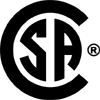 |
The CSA mark may appear alone or with indicators. If it appears
alone, it means that the product is certified for the Canadian
market, to the applicable Canadian standards. |
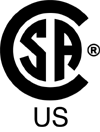 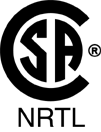 |
If the CSA mark appears with the indicator "US" or "NRTL" it
means that the product is certified for the U.S. market, to the
applicable U.S. standards. |
  |
If this Mark appears with the indicator "C and US" or "NRTL/C"
it means that the product is certified for both the U.S. and
Canadian markets, to the applicable U.S. and Canadian
standards. |
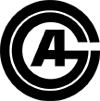 |
CGA "Script"
The Canadian Gas Association (CGA) "Script" for components of gas
appliances and other liquid petroleum products indicates
certification to applicable Canadian standards. |
 |
A.G.A. Blue Star
The American Gas Association (A.G.A.) "Blue Star" mark for gas
appliances and other liquid petroleum products indicates
certification to applicable U.S. standards. |
 |
CSA Blue Star
The CSA Blue Star Mark for gas appliances and other liquid
petroleum products indicates certification to applicable U.S.
standards. |
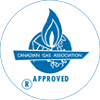 |
CGA Blue Flame
The Canadian Gas Association (CGA) "Blue Flame" mark for gas
appliances and other liquid petroleum products indicates
certification to applicable Canadian standards. |
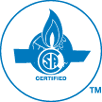 |
CSA Blue Flame
The CSA Blue Flame Mark for gas appliances and other liquid
petroleum products indicates certification to applicable Canadian
standards. |
 |
A.G.A. "Script"
The American Gas Association (A.G.A.) "Script" for components of
gas appliances and other liquid petroleum products indicates
certification to applicable U.S. standards. |
| DEMKO |
| Mark |
Description |
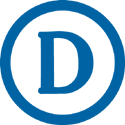 |
DEMKO's D-Mark represents electrical product safety for a great
majority of consumers.
The D-Mark demonstrates that, from a safety point of view, the
tested product complies with:
- Harmonised standards, e.g. EN/HD
- International standards, e.g. IEC
- National standards, e.g. DS
- Other national standards e.g. American National or UL
Standards
- Other relevant parts of the above-mentioned standards which
form part of the basis for certification e.g. National
Deviations.
|
 |
DEMKO is the Competent Body for the EMC Directive and performs
testing under the EMC Directive. An EMC test, in addition to an LVD
test, at DEMKO gives you the right to use DEMKO's EMC Mark. The
accompanying report can be used as documentation for CE Marking of
your product in accordance with the EMC Directive. Safety related
EMC tests under the Low Voltage and Machinery Directives should
always be performed either before, or in connection with, EMC
testing under the EMC Directive in order to avoid expensive double
work. EMC testing at DEMKO can be monitored by the manufacturer so
that any problems arising can be dealt with immediately, or DEMKO
can, by agreement with the manufacturer, make any necessary changes
and retest the product. |
 |
European EMC Mark
A mark for EMC has been introduced in the 15 most recognised
certification bodies in Europe.
- The CCA EMC Mark gives you the possibility to document that EMC
requirements, which can often be difficult to handle, have been
complied with.
- The CCA EMC Mark is recognised by the certification bodies in
the 15 countries who recognise each other's results. Full European
recognition is hereby achieved.
- The EMC Certificate is always documented by an accompanying EMC
test report.
- The EMC Mark can be used together with national safety marks as
well as with the CE Mark.
|
| VARIOUS |
| Mark |
Description |
 |
The CE-marking is the manufacturer's statement to the EU
authorities that his product complies with all relevant CE-marking
Directives. It is important to emphasise that the CE-marking is not
a quality mark or a guarantee to consumers in EU.
The manufacturer is always responsible - within or outside EU - for
CE-marking. If the manufacturer is not located in EU, he can
authorise a representative located in EU who thus becomes
responsible for CE-marking. The representative's duties and
responsibilities must be agreed in writing. Importers not
authorised by the manufacturer must keep his documentation in
safekeeping in EU for ten years after the last production date.
Please bear in mind, that the importer may always be held
responsible for the documentation. |
 |
ENEC is an abbreviation for "European Norms Electrical
Certification". These four letters are part of the registered trade
mark that demonstrates that a product has been certified by one of
the national certification institutes in Europe. Today, there are
18 certification institutes who are signatories to the agreement.
Apart from the ENEC Mark itself, there is also a two digit number
that indicates which certification body has issued the ENEC
Certificate.
The ENEC Agreement was originally (in 1991 under the name, the LUM
Agreement) started with a view to providing manufacturers of
luminaires with a joint European certification mark to replace all
the different national marks. In 1999, the agreement was expanded
to include:
- Lighting
- Components for lampholders
- IT
- Electric office equipment
- Safety isolating transformers
- Isolating transformers and separating transformers
- Power supply units
- Switches
|
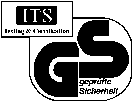 |
The GS-Mark is the German national mark that demonstrates that
a product has been tested and found to comply with the standards
for the product. The GS-Mark is to Germans what the Danish D-Mark
is to Danes. The GS-Mark is very well recognised by German
consumers; so well recognised that certain products are nearly
impossible to sell without the GS-Mark.
For manufacturers and importers wishing to sell their electrical
products in Germany, it is a good idea to have a GS-Mark. There are
three particular areas where a GS-Mark is nearly a necessity:
tools, IT equipment and electromedical equipment.
Manufacturers of tools often have a hard, if not impossible, time
selling their products in Germany without a GS-Mark because such
marking is supported by consumers and the trade unions. IT
equipment is also effected by the requirement for GS-Marking; the
mark is a requirement if you wish to sell major companies or
institutions.
The third area where the GS-Mark is particularly important is
electromedicine because a GS-Mark is a prerequisite for a grant to
the institution in question from the German authorities. |
 |
Keymark is a European safety mark identical to the well-known
systems on which the existing European CCA system is built. Some of
the most important criteria for testing products under the CCA
rules are: factory inspection, random sample supervision and
testing performed by testing institutes of equal standing. Market
supervision is performed, i.e. products are periodically sampled
from the market for examination in accordance with the procedures
applied by the individual countries' national bodies. The testing
institute responsible for issuing the Keymark is identified by
means of a numerical code which constitutes part of the Keymark
itself. |
 |
Institute für
Software, Elektronik, Bhantechnik |
 |
The NOM Mark is the Mexican product safety mark. Our Mexico
City laboratory is an accredited SECOFI laboratory - however, you
can receive testing from any one of our laboratories to receive
this certification. |
 |
Warnock Mark Mark represents compliance to United States and/or
Canadian product safety standards. The Warnock Hersey Mark can be
found mainly on fire doors, sealed insulated glass, building
materials and gas and oil fired products, like hearth
products. |
 |
The GOST R certification mark is part of the mandatory Russian
Certification system. |
 |
ETL Listed Mark
ETL Listed Mark represents compliance to United States and/or
Canadian product safety standards. You will find the ETL Listed
Mark on electrical- gas-, or oil- fired products.
For the United States, we are recognized by Occupational Safety
Hazards Association (OSHA) as an National
Recognized Testing Laboratory (NRTL). Click on the NRTL
link to view the scope of recognition (the list of standards,
sites, and programs that OSHA has recognized us for). In Canada, we
are accredited by the Standards Council of Canada (SCC) as a
Testing Organization and a Certification Organization. |
 |
ENERGY STAR is the symbol for energy efficiency. It's a label
-- created by the U.S. Environmental Protection Agency and the U.S.
Department of Energy -- to help consumers save money and prevent
air pollution.
An appliance or product with the ENERGY STAR label means that it's
in the top of its class for energy efficiency. Products that meet
EPA and Department of Energy efficiency criteria qualify as ENERGY
STAR. Consumers save money with ENERGY STAR products because they
use less energy than conventional products and cost less to
operate. ENERGY STAR products also offer the same or often better
performance and features as conventional products. |



































